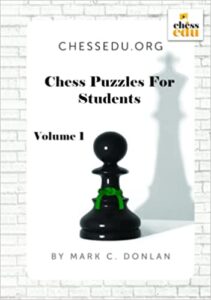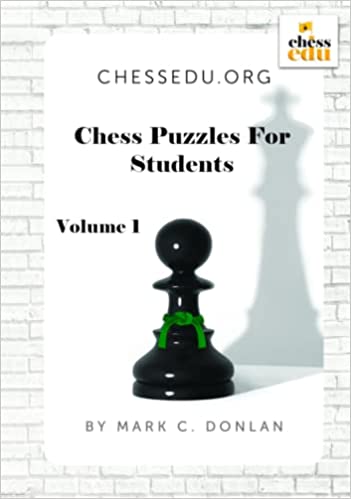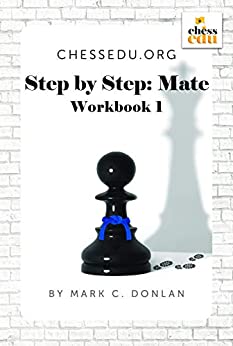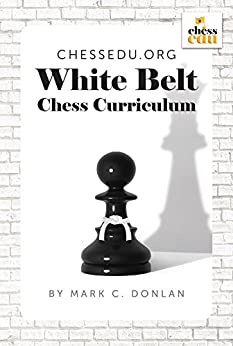The puzzles presented in Chess Puzzles for Students, Volume 1 are designed to sharpen your tactical acuity and enhance your visualization skills. In each puzzle you are shown the position just before the tactic occurs and then asked to visualize the winning sequence; thereby emulating a real game scenario. We intersperse these puzzles with endgame studies and chess problems to explore the broad spectrum of chess creativity. We recommend using these puzzles in conjunction with the ChessEdu.org curriculum. Each single puzzle can be a classroom lesson for problem solving.

If you are working on your own, try solving some puzzles by setting the position on a chessboard and thinking for as long as you need without moving the pieces. Once you have worked through all the puzzles, try them again in random order to reinforce your pattern recognition skills.
Game examples are taken from the golden age of chess play from as far back as 1821 right up to the present day. While there are some classic brilliancies of chess play, including examples from world champions Carlsen, Anand, and Kasparov, there are also many more examples from international competitions, women’s competitions, and regional competitions in the Northeast area of the United States featuring local international masters. Beyond over-the-board play, correspondence play is represented among the puzzles as well.
The puzzles come from all phases of the game: opening, middlegame, and endgame. Demonstrating that tactics are a constant opportunity if you can spot them. The answers are given at the end of the book, along with the complete game scores. Readers are encouraged to play through the entire game to see how the final positions came about. Beyond solving for a winning attack, try to find an improvement for the defender as well.
Working through these examples will help you memorize common tactical patterns and deepen your intuition as to when a winning opportunity is at hand, even when it involves sacrificing material. You will learn to combine multiple tactical themes to create crushing attacks. There are a total of 933 exercises: with 630 puzzles, 195 problems, and 108 studies. An index for reading algebraic notation is also provided. Here’s wishing you the best in chess!



Leave a Reply